In today’s fast-paced environment, it’s easy to ignore the value of high fiber foods in our diet. However, high fiber foods diets are vital for digestive health, avoiding chronic diseases, and increasing overall well-being. In this complete guide, we will look at what fiber foods are, why they are important, and how you can simply incorporate them into your regular diet.
What Are the high Fiber Foods?
high fiber foods contain a lot of dietary fiber, a type of carbohydrate that the body cannot digest. Fiber, unlike other carbs, passes through the digestive system largely intact, which promotes gut health and smooth bowel movements.
high fiber foods contain two forms of fiber:
- Soluble : fiber dissolves in water, producing a gel-like material.
- Insoluble : fiber does not dissolve in water and provides volume to the stool, so preventing constipation and encouraging regular bowel movements.
Plant-based foods high in fiber include fruits, vegetables, whole grains, legumes, nuts, and seeds. Eating a variety of these foods is essential for a healthy, fiber-rich diet.
Table of Contents
Why Are high Fiber Foods Important?
Including extra high fiber foods in your meals has a variety of health benefits:
1. Promote Digestive Health.
Fiber bulks up your stool and makes it easier to pass, lowering the risk of constipation, hemorrhoids, and diverticulosis. A high-fiber diet promotes digestive health and may reduce your risk of colon cancer.
2. Aid in Weight Management.
high fiber foods keep you fuller for longer, allowing you to eat less calories overall. They slow digestion and control blood sugar levels, lowering cravings and preventing overeating.
3.Lower cholesterol levels.
Soluble fiber in high fiber diets binds to cholesterol particles and aids in their elimination from the body. This can help reduce LDL (“bad”) cholesterol and enhance heart health.
4.Regulate Blood Sugar.
Individuals with diabetes or those at risk can benefit from rich fiber foods because they reduce sugar absorption into the bloodstream.
5.Promote gut health Microbiome
Fiber provides nourishment for the healthy microorganisms in your gut. A fiber-rich diet encourages the growth of beneficial bacteria, which are essential for immunological function and inflammation control.
The finest high fiber foods to incorporate into your diet:
Let’s look at some of the most healthy and readily available high fiber foods you can start eating today.
1. Whole Grains.

Whole grains include all of the grain kernel, making them a great source of dietary fiber. Some excellent choices include:
- One cup cooked oats has around 4 grams of fiber.
- Brown rice has around 3.5 grams per cup cooked.
- Quinoa has roughly 5 grams per cup cooked.
- Whole wheat bread or pasta: Check labels for at least 3 grams of fiber per slice or dish.
- Barley and bulgur contain up to 6 grams per cup cooked.
2.legumes (beans, lentils, and peas).
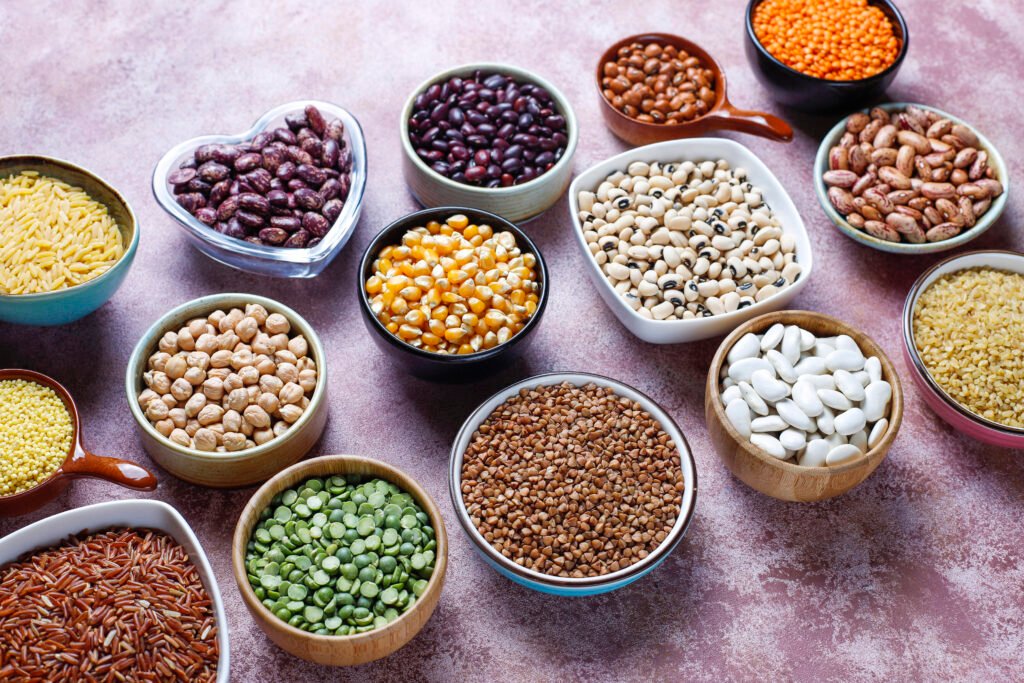
Legumes are high in both fiber and protein, making them great for any meal.
- Lentils – 15.6 g per cup cooked
- Black beans have 15 grams per cup cooked.
- Chickpeas (Garbanzo beans) – 12.5 g per cup cooked
- Split peas have more than 16 grams per cup when cooked.
Incorporate them into salads, soups, or even as a meat alternative in your favorite recipes.
3.Fruits.
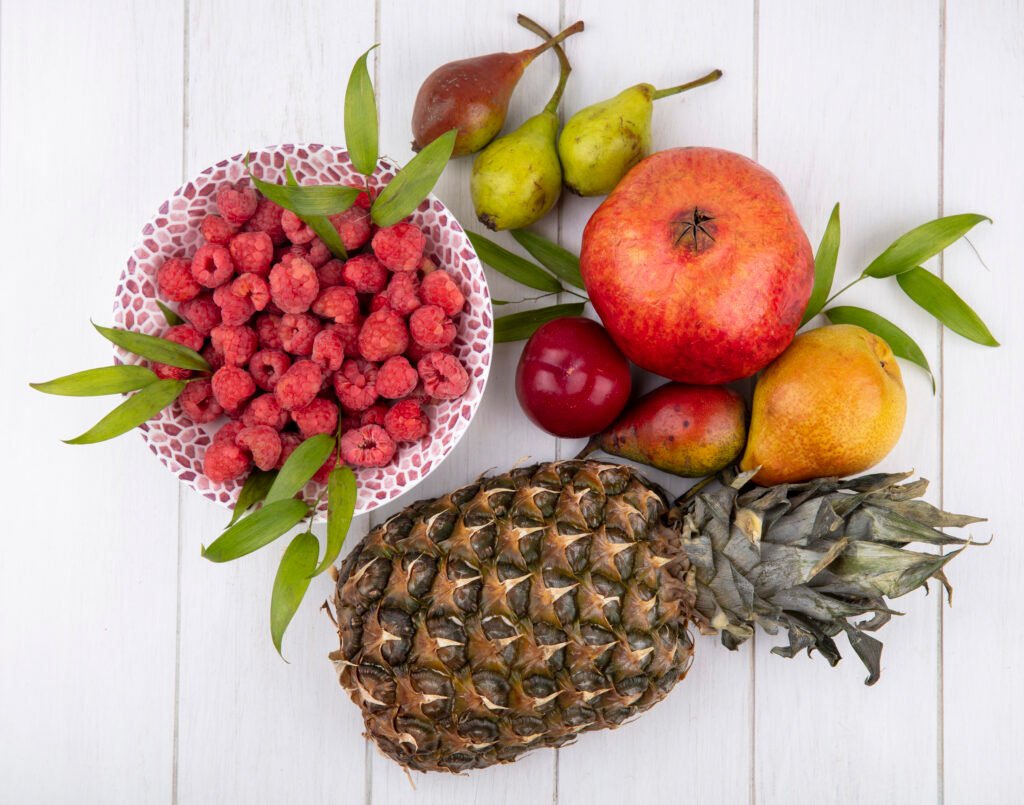
Many fruits include soluble and insoluble fiber. For optimal benefit, eat them with the skin on.
- Raspberries – 8g per cup
- Pears (with skin) – 5.5 g each
- Apples (with skin) – 4.4 g each
- Bananas – 3.1 grams apiece
- Avocados – 10 g per medium fruit
4.Vegetables.
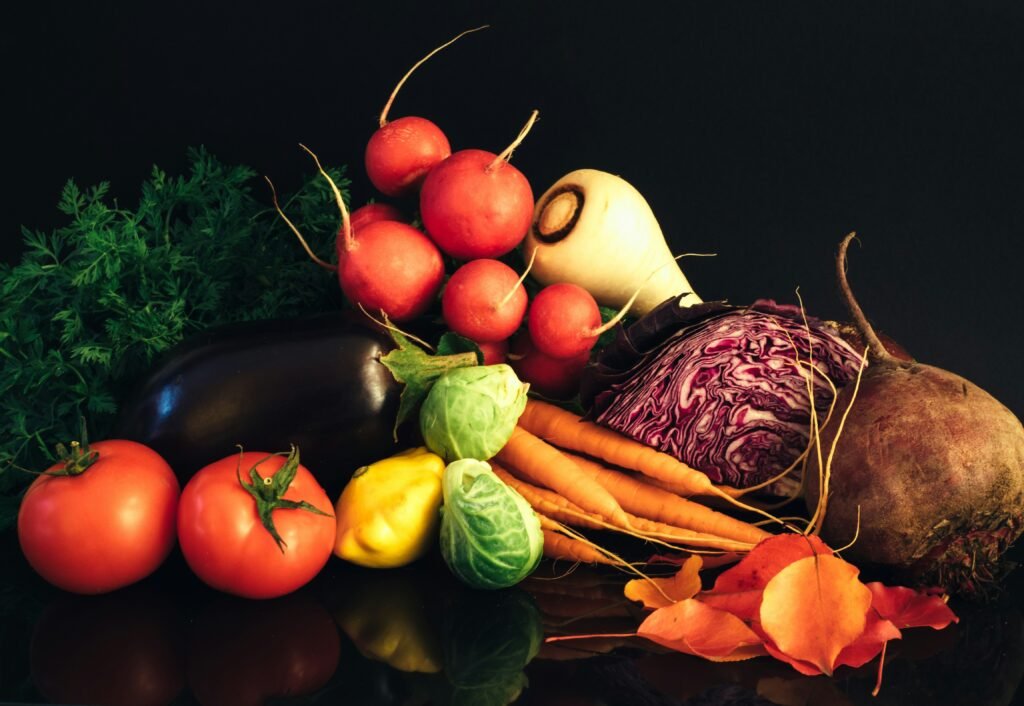
Veggies are among the most readily available fiber food, especially whether consumed raw or cooked.
- Broccoli – 5 g per cup cooked
- Sweet potatoes (with skin) are 3.8 grams per medium potato.
- Brussels sprouts contain 4 grams per cup when cooked.
- Spinach – 4 g per cup boiled
- Carrots – 3.6 g per cup boiled
5.Nuts and seeds.
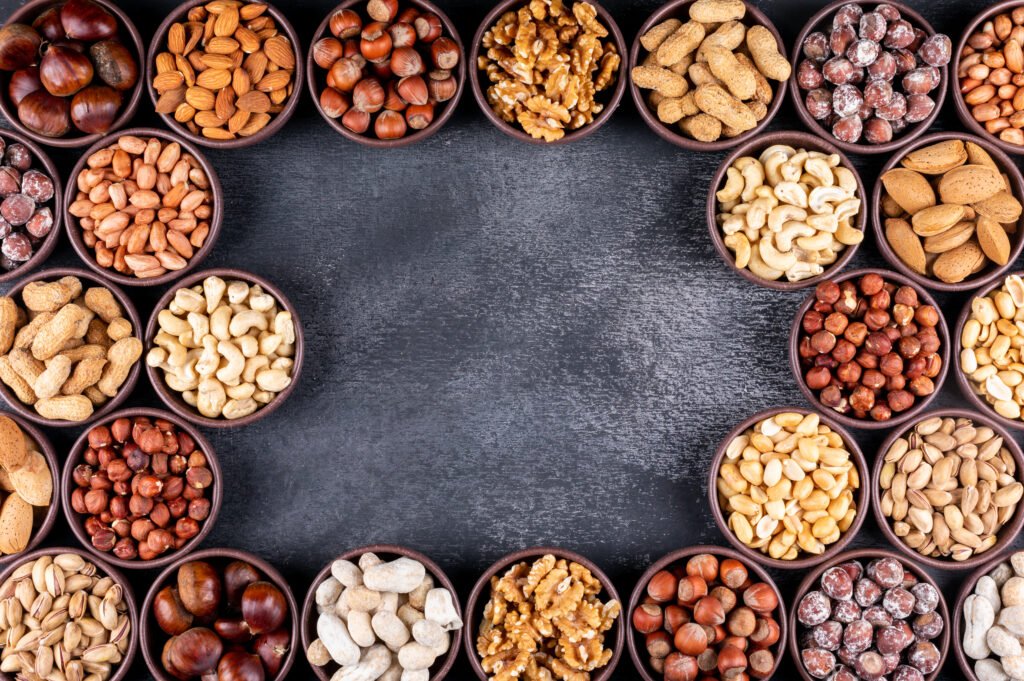
These nutrient-dense snacks provide plenty of fiber and healthy fats.
- Chia seeds are 10 grams per ounce (about 2 tablespoons).
- Flaxseed – 7.6 grams per ounce.
- Almonds have 3.5 grams per ounce.
- Sunflower seeds, 3.9 grams per ounce.
Sprinkle them on yogurt, cereal, or salads to increase fiber intake.
Daily Fiber Requirements: How Much is Enough?
The recommended daily intake of dietary fiber differs by age and gender.
- Men under 50: 38 grams daily.
- Women under 50: 25 grams daily.
- Men over 50: 30 g each day.
- Women over 50 consume 21 grams per day.
Unfortunately, most people fall short, consuming only 15-18 grams per day. This is why deliberately integrating rich fiber foods into your diet is critical.
How to Easily Add high Fiber Foods to Your Meals
Want to improve your fiber intake without completely changing your diet? Try these easy tip
1. Begin Your Day With Whole Grains
Replace your typical breakfast cereal with oatmeal or bran flakes. Add berries and almonds for a fiber-rich supper.
2. Choose Whole over Refined.
Always choose whole grain bread, pasta, and rice. These fiber-rich meals are more healthful and satisfying.
3. Add beans to everything.
Incorporate lentils into soups, black beans into tacos, and chickpeas into salads. They’re one of the simplest high fiber foods to prepare and eat.
4. Snack on fruits, vegetables, and nuts.
Instead of chips or candies, consider raw fruits, vegetables, or a small handful of almonds as a snack.
5. Drink more water.
It’s critical to stay hydrated as you eat more fiber-rich meals. Water aids fiber in its function by softening feces and transporting it efficiently through the digestive tract and boost your health with fiber-rich foods
Can you eat too many high fiber foods?
While fiber-rich meals are important, a rapid increase in fiber intake can induce digestive discomfort such as bloating, gas, and cramps. To avoid this:
Increase your fiber consumption gradually over several days or weeks.
Drink more fluids.
Spread your fiber consumption throughout the day.
This strategy helps your digestive system to adjust while minimizing discomfort.
Conclusion: Make high Fiber Foods A Daily Habit.
Incorporating extra high fiber foods into your regular meals is one of the best things you can do for your health. A fiber-rich diet can help with digestion, weight management, blood sugar regulation, and cholesterol reduction.
Nature offers a wide variety of delicious and adaptable high fiber foods, such as whole grains and legumes, fruits and vegetables, nuts, and seeds. Begin small—swap white bread for whole grain, add beans to your meal, or snack on a pear—and work your way up to the recommended daily intake.
With each bite of rich fiber meals, you are not only feeding your body, but also investing in a better, happier future.

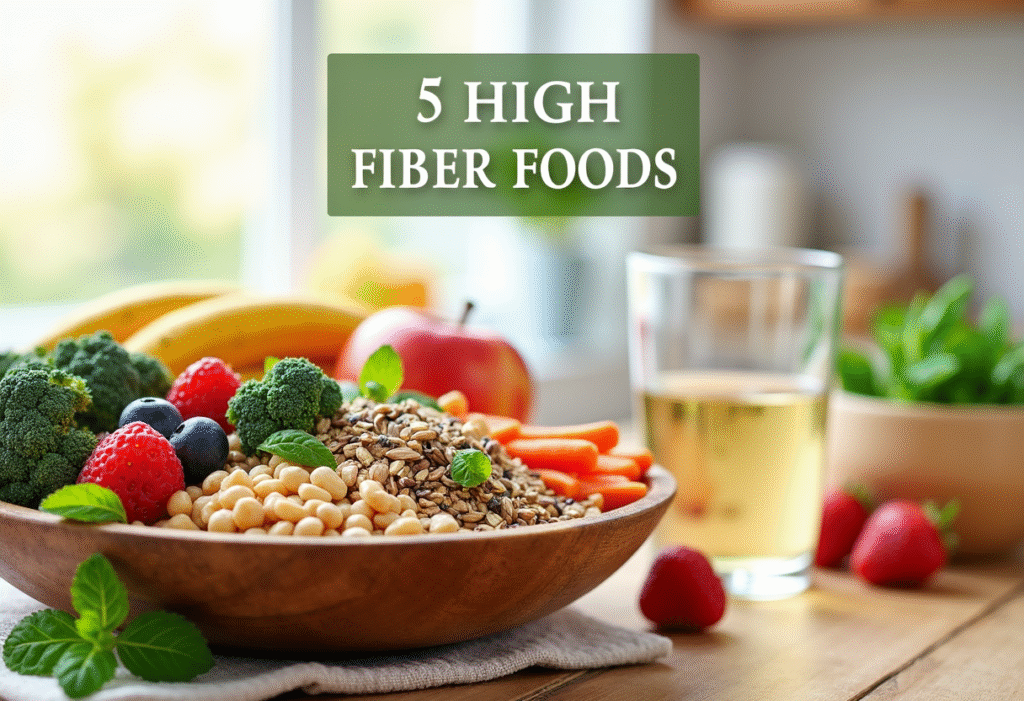



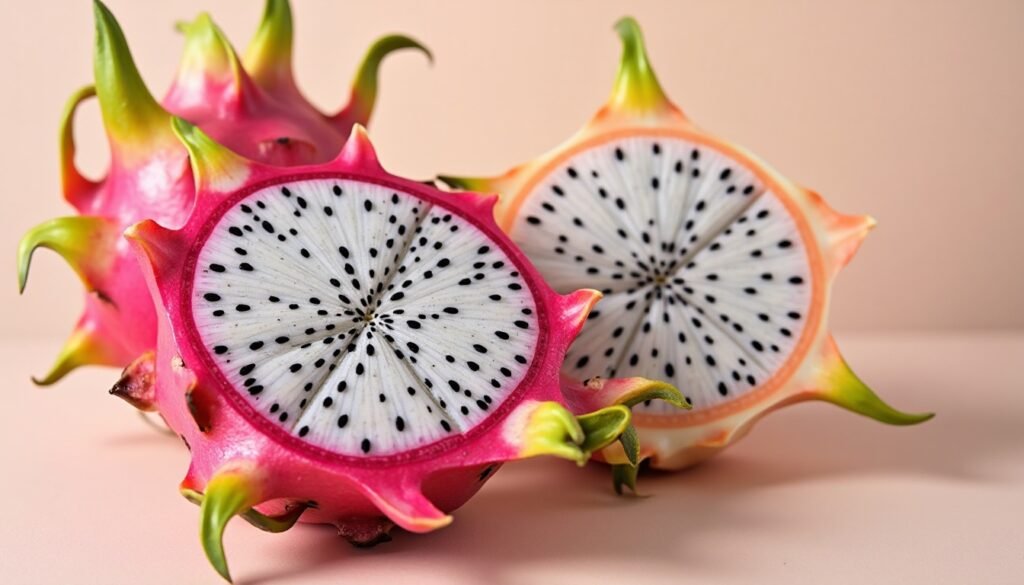
Pingback: 10 Powerful High-Protein Fruits to Supercharge Your Body